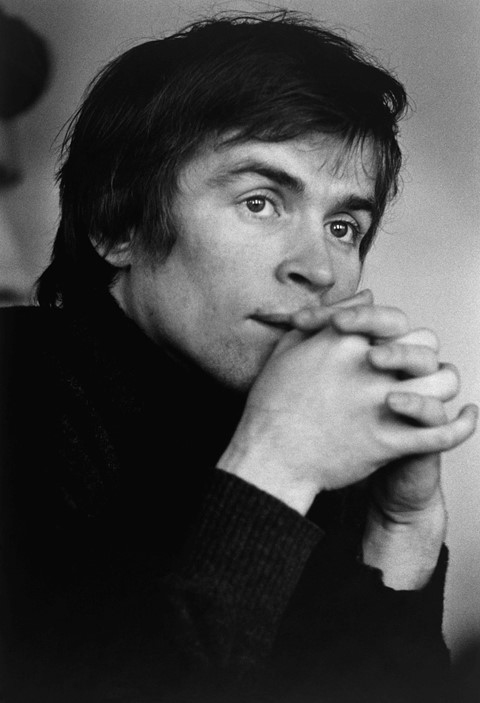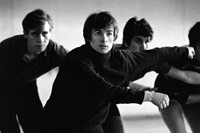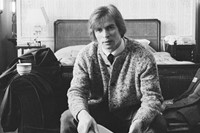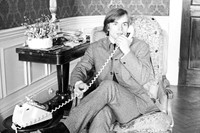Following Kim Jones’s Dior Autumn/Winter 2024 show, which drew inspiration from the exquisite style of Rudolf Nureyev, we take a closer look at Colin Jones’s photographs of the infamous ballet dancer
After getting his first taste of freedom in Paris while on tour with the Kirov Ballet in June 1961, 23-year-old Rudolph Nureyev faced down KGB operatives at Le Bourget Airport. A global sensation, the dance prodigy had risen to world renown for his extraordinary talent and rebellious spirit amidst the political machinations of the Cold War. While abroad, Nureyev fearlessly flouted Soviet laws against homosexuality in the West, having absolutely no intention of returning to a country where he faced five years hard labour in prison for the “crime”.
Like a scene from an Alfred Hitchcock film, Nureyev stepped into the role of a lifetime as he dashed through a security barrier while shouting in English, “I want to stay and be free!” The following day, the dancer’s dramatic defection made headlines all around the world, except back in the USSR, where he was sentenced to prison in absentia. For the dancer, it was less a matter of political ideology and more so a devotion to ballet that compelled an act labelled “treason”. His arrival in the West was immediately well received and he soon joined the Royal Ballet, where he danced with prima ballerina Dame Margot Fonteyn, a living legend in her own right.
By the 1960s the Royal Ballet entered a golden age, with all of its glamour and intrigues an integral part of its celebrity allure. Among the company was Colin Jones, a dancer hailing from east London, and his wife, Lynn Seymour; their marriage fell apart after commercial pressures on the company recast Nureyev and Fonteyn in the premier, originally given to Seymour. Jones, who joined the company in 1953, took up photography while on tour, finding himself increasingly drawn to working-class and immigrant communities.
The discipline required to be a professional dancer had honed Jones’s rebellious streak, inspiring him to forge his own path as a self-taught photographer. In 1962, he left the Royal Ballet to pursue his passion for photojournalism, going on to amass an archive of more than 3,000 handmade prints chronicling historic events like the British Miners Strike, the American Civil Rights Movement, and Afro-Caribbean communities in post-Windrush London.
But it was Jones’s intimate knowledge of the realms in which Nureyev lived and worked, that landed him the assignment of a lifetime in 1965 when Time Life magazine commissioned him to photograph the Tatar dancer and choreographer for their popular “day in the life” series. Published in 1966, the photographs capture the divine spark of Nureyev’s genius with the admiration and respect born of Jones’ profound connection to the dancer.
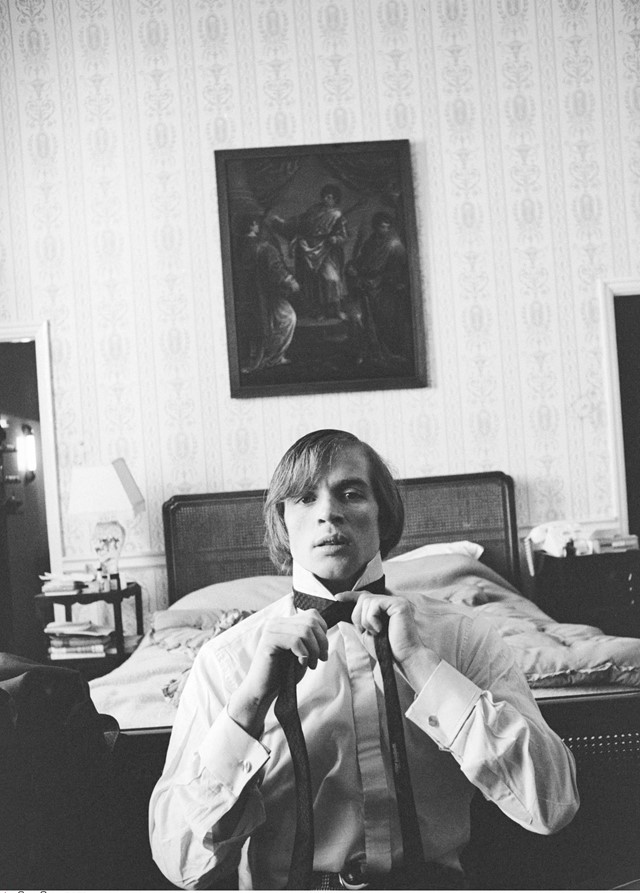
Six decades later, Jones’s photographs made headlines once again as the inspiration for his nephew Kim Jones’s Dior Autumn/Winter 2024 show in Paris. In a statement, the Dior creative director described visiting his uncle’s darkroom in his youth, watching the images emerge in the developing trays, and deepening his understanding of the relationship between beauty and creativity. Returning now to these photographs, Kim Jones has restored this singular chapter of fashion history to the world.
Jones’s photographs are a record of both artistic collaboration and personal connection that cemented the friendship between both men. The series begins with Nureyev at home, a vision of sartorial splendour as he attends to the business at hand before setting out to a pub on North End Road, then arriving at the studio for rehearsal. Their personalities were perfectly suited to their respective roles, with Jones cast as the straight man and Nureyev playing the star. “Rudi was a great laugh, very outspoken,” Jones said. “He was fantastically bright, spoke six languages, and had an animal magnetism: you couldn’t take your eyes off him when he was on stage.”
With a decade of training under his belt, Jones was perfectly adept at combining his lithe physicality and impeccable timing to capture the scene. At a time when artists and celebrities preferred to be photographed as paragons of beauty, Jones sought a deeper truth that spoke to the reality of their circumstances. “Dancers only want to look absolutely perfect in their pictures. To me that wasn’t what it was about, it was about the physical work,” Jones said. “I prefer dancers backstage, because it’s what the audience never saw, they never saw the hard work these people went through to get to their professional peak, they only saw the glamour.”
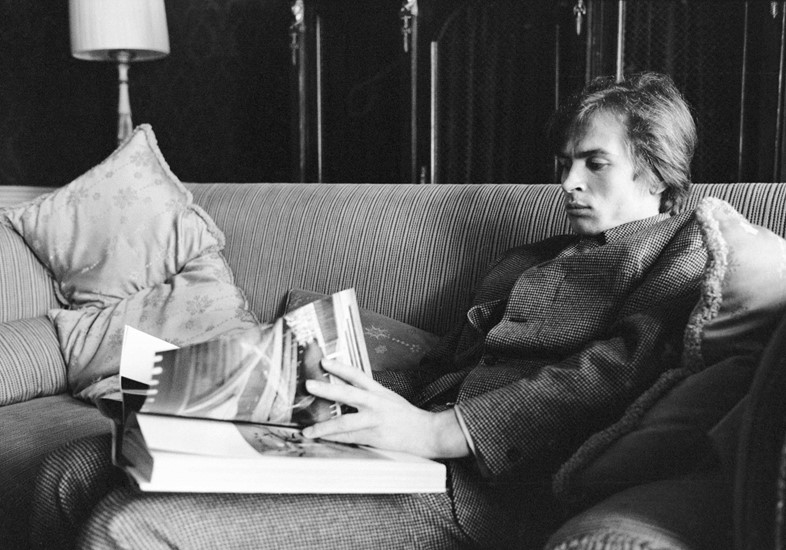
“Colin liked the human element. You can see that with Rudi; he’s not presented as a god who is untouchable. He’s very accessible in that way,” says Flora Smith, managing partner of TopFoto, which represents the digital and ephemera archive for the Colin Jones Estate. She points to their shared experiences as young men coming of age in communities that did not share or appreciate their desire to dance, and facing issues like food insecurity as a result. Theirs was a rare brotherhood forged by a desire that outweighed all, and in this shared moment, they were now free to be their true selves.
“Colin was kind, quiet, and radical all at the same time,” Smith says. “He always said that Rudi was huge fun, really naughty, and a real prankster. Colin, who was quiet and wouldn’t draw attention to himself, was the perfect foil on that day and they remained friends. He was a deep thinker with real compassion and a great sense of humour who honoured his subjects until the day he died, and several came to the funeral. He was a very dear man.”
The Colin Jones Estate digital archive is managed by TopFoto. Colin Jones prints are available from the Michael Hoppen Gallery in the UK and Obscura Gallery in the US.
